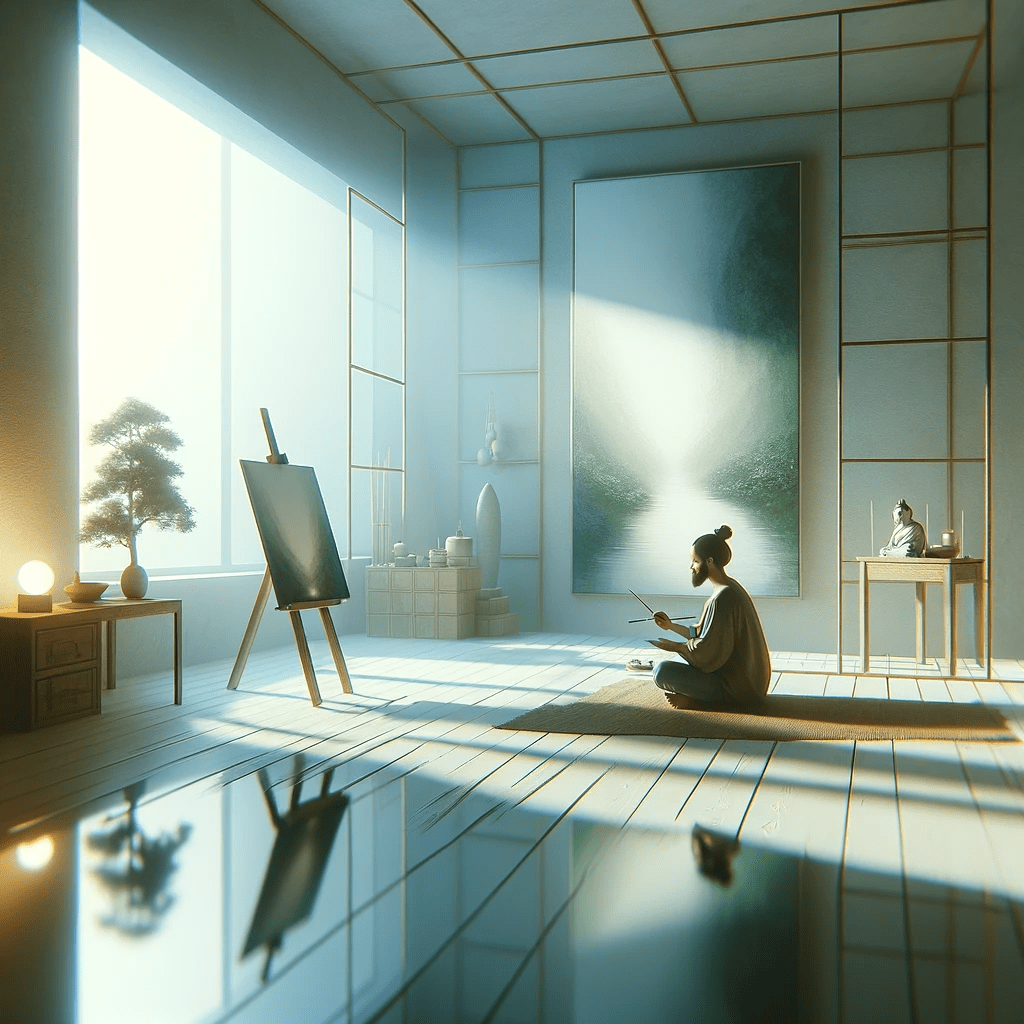The Meditative Brush Stroke
In the serene silence of the studio, the artist picks up the brush, dips it in color, and pauses — a moment of anticipation, of connection. This is where meditation begins. Art as a form of meditation is an ancient practice that harnesses the creative process as a means of reaching inner stillness, of touching the soul’s quietude amidst life’s cacophony.
Cultivating Mindfulness Through Creation
The act of creating art demands a present awareness, a focus that is akin to the concentration found in traditional meditation practices. Whether it’s the careful stroke of the brush on canvas, the shaping of clay with hands, or the dance of the pencil on paper, each action requires a mindful presence that anchors the artist in the now.
The Flow State: Where Time Dissolves
Artists often speak of entering a ‘flow state’ — a space where time seems to stand still, and the self merges with the creation. This flow state is meditation in motion; it’s where the ego recedes, and a pure, unadulterated connection with the creative force emerges. It is in this space that the meditative power of art reveals itself.
Healing Through Expression
Art therapy has shown us that the process of making art can be healing. It’s a meditative practice that allows emotions to flow, providing a non-verbal outlet for feelings that might otherwise remain trapped. Through painting, drawing, sculpting, or any other form of artistic expression, individuals can embark on a journey of self-discovery and healing.
The Ritual of Art-Making
Approaching art as meditation involves creating a ritual around the practice. It might involve setting up a dedicated space, choosing materials with intention, and allowing oneself the time to fully engage with the act of creation. The ritualistic aspect helps in creating a sacred space for the mind to rest and the spirit to soar.
Silence and Solitude: Companions in Artistic Meditation
In the embrace of silence and solitude, the meditative artist finds a powerful ally. The quietness of the environment reflects the quietness sought within. The solitude provides a canvas for the inner self to paint its landscapes, free from the distractions of the external world.
Conclusion
Art as a form of meditation is a dance between the conscious and the subconscious, the seen and the unseen, the tangible and the intangible. It is a path walked with colors, shapes, and textures, leading to a place where the noise fades and clarity takes shape. For those who walk this path, art becomes more than a hobby or profession; it becomes a way of life, a form of spiritual practice that can lead to profound inner peace and insight.

